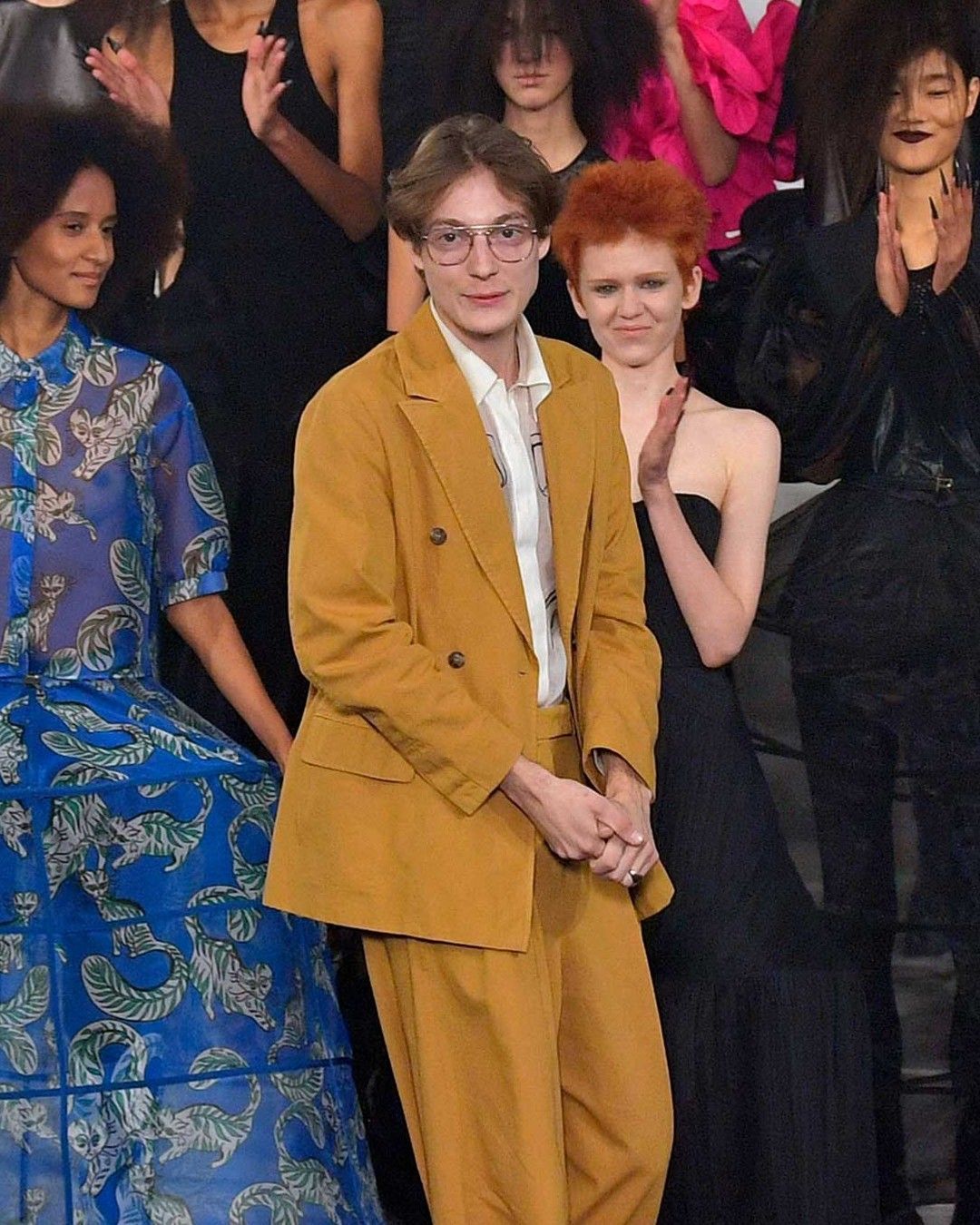
Charles De Vilmorin and the myth of the enfant prodige Fashion has a narrative problem
In today's news came that Charles de Vilmorin's contract at Rochas was not renewed after two years as creative director. While certainly sorry for the young designer, the news certainly does not come as a surprise: not only had we almost forgotten Interparfums' Rochas even existed (even the brand's name was confused with that of the more talented Simone Rocha), but the Vilmorin-led revival was largely dead on arrival - so much so that last year even the very clement Vogue, which has not written a negative review since the roaring twenties, had flunked Rochas' SS23 collection, calling the designer as «a victim of poor recruitment» saying that «it seems almost cruel to lay the weight of the house of Rochas upon the shoulders of a young man who, perfectly understandably, lacks the training and savoir faire to carry it». Later criticisms were indeed more lenient - but those are meant for the public: behind the scenes, the young Vilmorin is not as incensed as it might seem from the hagiographic profiles that were written about him at the time of his nomination, describing him as the enfant prodige of French couture, the petit prince de la mode, the new Yves Saint Laurent, Gaultier's protégé. The problem, however, lies not in Vilmorin, who as a designer must certainly be gifted to have made it to the LVMH Prize and ended up in every industry publication, but in the uncritical and reckless manner in which the fashion industry has trumpeted his talent, as if it were eager to find a new face to adore, a new star to point the finger at, and, in short, a new icon. There is only one problem: icons are not born in vitro. And that of the enfant prodige is a myth.
Even the story of the main fashion's enfant prodige, Yves Saint Laurent, appointed as Dior's successor when he was only 21 years old, is not all sunshine and roses: the very young designer gambled away his job with Dior's FW58 Haute Couture collection-a fiasco so big that the designer failed to avoid conscription into the army and military hospital. Today these and other stumbles in the great designer's career have been historically overhauled as misunderstood moments of brilliance (think SS71 collection, the disastrous period in the late 1980s when Bill Cunnigham spoke of «pathetic decline», to the near-disintegration that the brand risked in the early 1990s) since it is complicated to admit that a designer's creativity can have over the course of years alternating outcomes without qualifying him or her once and for all as good or incompetent. The problem, again, lies not with the designers but with those who talk about them - creating expectations only means inflating potential disappointments beyond measure but with the risk of bringing some talents to international prominence prematurely, prompting the public and the press itself to create hasty and biased impressions of them. Everyone loves the arrival of a young genius, but not so many love their stay. All the more so if the young genius in question, like Vilmorin, did not exactly come up out of nowhere but, like a huge number of people in the industry, comes from a wealthy family (the Vilmorins created one of the largest seed distribution industries in France, which remained in family hands for two centuries, from 1743 to 1972) and has a father who works as the financial director of a famous brand that no one names and, in short, is certainly not without important connections and resources. The risk is to create a kind of cultural speculative bubble: publicly we cry prodigy, privately we proceed to crush it.
I have no idea who this is… pic.twitter.com/1xE70tYpnp
— Ryan Lowe (@ryvnlovve) April 24, 2023
But prefabricated success breeds resentment among the public and commentators-this is the case with Vilmorin, against whom some people rage, though without assigning blame, to essentially say he has connections and privileges that helped him get there. It is the case with so many other designers, usually those whose rise has been more meteoric, but more importantly it is the case with any enfant prodige whom one side of the public welcomes and whom the other side sadistically waits in the wings. The problem is this binary narrative of total success and total failure hurts everyone: to the public, which is forced to divide between supporters and opponents; to the press, which instead finds itself forced to simplify and generalize discourses that deserve more nuance; and, finally, to the enfant prodigies themselves, who, branded with the status of "genius," do not receive genuine critical feedback or mentoring through which to grow artistically (God forbid that a creative person receive input or suggestion or that his or her vision be questioned even in the slightest) and cannot allow themselves to lower their sights, risking on the one hand losing face or on the other hand ending up in burnout.
@rochas_official Few words from our guests at the Spring Summer 2023 show, taking place in the iconic venue, Les Folies Bergère in Paris #pfw #rochas #ss23 #rochasparis #rochasss23 #springsummer23 #charlesdevilmorin Thanks to our amazing guests @paloma_hugobardin @daphneburki @carolinehxr @sulivan son original - Rochas Paris
There is in short a need for more articulate narratives -narratives that an audience like fashion, so involved in the world of culture, can surely handle. Anyone who has been to a fashion show knows very well that as soon as we get up from our chairs, after the show is over, everyone already has sharp and definite opinions in their heads about the collection they have just seen - all inevitably translated into reviews that can only be "for" and "against." When Alessandro Michele was at Gucci, say, very few dared to question his ability, and those who loved his collections loved them en bloc, without venturing to say that one look was successful and another less so, without presenting nuances or gradations in judgment. Yet if the artistic status of fashion is to be preserved, one cannot continue to divide creative people into prodigies and impostors - just as it makes no sense to promote the inexperienced, perhaps precluding them from important apprenticeship periods that can temper the sometimes acerbic and amateurish exuberance of the beginners. Today's most respected designers, after all, started out young but found fame at an older age. The fashion narrative, however, often goes through some great collective hypocrisies that no one breathes a word about until they are over, merely commenting on social media a liberating «Finally!» when an announcement is made and there is no more risk of being banned from shows and events. But in a fashion so preoccupied with leaving good impressions no one wins except good manners, even if at some point even on the best plays the curtain falls and the applause in the stalls becomes contempt by the time the audience has reached the exit of the hall. Wouldn't it do everyone good to speak with more caution and placid sincerity?












































